AI is no longer just a buzzword. It’s everywhere. From automating emails to writing social media captions to analyzing customer behavior faster than you can blink, artificial intelligence is reshaping the way businesses connect with audiences.
But here’s the thing: while AI is becoming the shiny new toy in the marketing world, the question on everyone’s mind is… can it fully replace traditional marketing strategies?
It’s a fair question. You see AI creating personalized experiences at scale. You see brands relying on algorithms more than gut instincts. And you wonder if there is still room for billboards, TV commercials, print ads, or even old-school brand storytelling?
This blog explores exactly that. We’re diving into what traditional marketing still offers, how AI is shaking things up, and where the two collide.
The goal? To get a clear answer to whether AI will replace traditional strategies, or whether we’re all just getting a little too ahead of ourselves.
What is Traditional Marketing and Why It Still Matters?
Traditional marketing isn’t outdated, it’s just… not digital. Think print ads in newspapers, TV commercials, radio jingles, flyers, billboards, and cold-calling. These are the kinds of strategies that ruled the marketing world long before websites, social media, or Google Ads were even a thing.
What makes traditional marketing particularly powerful is its ability to create tangible, multi-sensory experiences that digital channels simply cannot replicate. The psychology behind physical interaction whether it’s holding a beautifully designed brochure or seeing a massive billboard during your commute, engages multiple cognitive pathways that enhance memory retention and brand recall. Research consistently shows that traditional media creates stronger emotional imprints, with consumers often remembering print ads or TV commercials weeks after exposure, something that’s increasingly rare with digital advertising, where attention spans are measured in seconds.
And while digital channels now dominate conversations, traditional marketing still plays a big role, especially for:
- Mass-market reach: TV or radio still reaches millions at once.
- Brand credibility: People trust what they see in print or on TV more than a random banner ad.
- Emotional connection: A heartfelt Super Bowl ad? Still priceless.
- Tactile experience: Direct mailers and physical coupons create memory through touch, something screens just can’t replicate.
The authenticity factor cannot be overlooked. Traditional marketing often feels less intrusive and more trustworthy than digital alternatives, which consumers increasingly view with skepticism due to privacy concerns and ad fatigue. These conventional channels, such as ATL, BTL, also offer unparalleled reach in specific demographics, particularly among older consumers who may not be as digitally engaged but possess significant purchasing power.
Yes, it’s more expensive. And no, it’s not as easily measurable. But when it comes to visibility, branding, and reaching demographics that aren’t glued to their phones all day, traditional marketing still delivers.
The question isn’t whether traditional marketing is dead. It’s whether it can survive and evolve alongside AI.
How AI is Changing the Marketing Segment?
Now let’s talk about the new kid on the block: artificial intelligence.
AI isn’t some far-off, futuristic tool anymore. The transformation AI brings to marketing goes far beyond simple automation; it’s fundamentally changing how brands understand and interact with their customers. Machine learning algorithms can now process vast amounts of consumer data in real-time, identifying patterns and trends that would be impossible for human marketers to detect manually. It’s being used right now by businesses large and small to:
- Predict customer behavior using analytics
- Write and personalize email campaigns
- Answer queries via chatbots
- Run smarter, real-time ads
- Recommend products based on past behavior
This capability extends to predictive analytics, where AI can forecast customer lifetime value, predict churn rates, and identify the optimal timing for marketing campaigns. Natural language processing has revolutionized content creation, enabling brands to generate personalized messaging at scale while maintaining relevance and engagement. Tools like ChatGPT, Jasper, and MidJourney can generate marketing copy, design creatives, and even automate customer journeys.
Furthermore, AI-powered attribution modeling helps marketers understand the true impact of their campaigns across multiple touchpoints, providing insights that were previously buried in complex customer journeys. AI can take massive data sets and pull insights marketers would’ve spent weeks uncovering manually.
And here’s what makes AI powerful: it learns. With machine learning, the system improves over time, refining its suggestions, optimizing budgets, and delivering better personalization.
What used to take a whole team of marketers now takes a fraction of the time and cost.
But is faster and cheaper always better? Not necessarily. While AI excels in logic and prediction, it still stumbles when it comes to nuance, emotion, and cultural awareness traits that are deeply human.
AI vs Traditional Marketing: A Side-by-Side Comparison
Let’s get real for a second. It’s not just about old vs new, it’s about what works best in different scenarios. Here’s a snapshot comparison:
| Factor | AI Marketing | Traditional Marketing |
|---|---|---|
| Speed | Real-time execution and optimization | Slower setup, often with longer lead times |
| Cost Efficiency | Lower long-term costs with automation | Higher costs for media space and production |
| Personalization | High; data-driven targeting and messaging | Low; mass communication, less tailored |
| Creativity | Limited to patterns and data | High; human emotion and storytelling |
| Measurement | Highly measurable and trackable | Harder to quantify (especially brand impact) |
| Emotional Appeal | Lacking subtlety and depth (for now) | Strong; often built to move or inspire |
Can AI Fully Replace Traditional Marketing? (The Big Question)
So here’s the big question: Can AI completely take over from traditional marketing strategies?
Short answer? Not anytime soon.
Long answer? AI is great at what it’s built for: automation, analysis, and optimization. It can take customer data, segment audiences, and personalize campaigns faster than a human ever could. It’s efficient and cost-effective. No doubt about it.
The complexity of this question lies in understanding what marketing truly accomplishes beyond mere transaction facilitation. Traditional marketing has always been about creating emotional bonds between brands and consumers, something that requires an intuitive understanding of human psychology, cultural context, and social dynamics.
But here’s where things get murky:
- AI doesn’t understand human culture or emotions the way people do.
- It struggles with original creative thought.
- It can’t replicate the sensory experience or emotional punch of an impactful TV ad or billboard.
While AI can analyze sentiment and behavioral patterns, it cannot genuinely comprehend the subtle nuances that drive human decision-making. Consider iconic campaigns like Coca-Cola’s “Share a Coke” or Nike’s “Just Do It.” These weren’t born from data analysis alone but from deep human insights about aspiration, connection, and identity. AI might optimize the delivery and targeting of such campaigns, but the creative spark, the cultural timing, and the emotional intelligence required to conceive them remain distinctly human capabilities.
And more importantly, it can’t build relationships the same way. Great marketing isn’t just about clicks and conversions; it’s about connection, story, and trust. These are things humans are wired for.
Algorithms? Not so much.
So while AI can augment a lot of traditional efforts, it can’t fully replace the deep emotional resonance that traditional marketing often brings.
Limitations of AI in Marketing That No One Talks About
AI is powerful, but it’s not perfect. There are limitations, and marketers should be aware of them:
- Lacks emotional intelligence: AI can’t feel. It can mimic sentiment, but it doesn’t truly understand it. That leads to tone-deaf campaigns if left unchecked.
- Creativity is capped: Generative AI is trained on past content. It’s great at remixing, not inventing. You won’t get out-of-the-box storytelling or risky, groundbreaking ideas.
Beyond these commonly discussed limitations, AI marketing systems face additional challenges that can significantly impact campaign effectiveness. Algorithmic bias represents a major concern, as AI systems can perpetuate or amplify existing prejudices present in training data, leading to discriminatory targeting or messaging that alienates entire demographic groups.
- Relies heavily on data: No data? Bad data? AI becomes useless or worse, misleading.
- Ethical concerns and trust: Deepfakes, fake reviews, privacy invasions, AI can erode trust if not used responsibly.
- No cultural nuance: AI might not catch slang, sarcasm, or subtle cultural differences, leading to awkward missteps.
These technologies also struggle with context switching. While it might excel at generating content for one industry or audience, it often fails to adapt appropriately when applied to different sectors or cultural contexts without extensive retraining. Additionally, AI lacks the ability to understand timing and social momentum in the way humans do, potentially missing crucial cultural moments or trending topics that could amplify campaign effectiveness.
These are not small problems. They’re the kinds of issues that make a human touch still essential in crafting marketing that doesn’t just sell but resonates.
Best of Both Worlds: Blending AI with Traditional Marketing
Here’s the sweet spot: integration.
Why choose one when the magic lies in using both? Smart marketers aren’t replacing, they’re enhancing traditional methods with AI.
The most successful integration strategies recognize that AI and traditional marketing serve complementary functions rather than competing purposes. AI excels at data processing, pattern recognition, and optimization, while traditional marketing brings authenticity, emotional depth, and cultural relevance.
For example:
- A brand might use AI to analyze what type of TV ads perform best with certain demographics and then design a traditional campaign around that data.
- Print ads can include QR codes powered by AI to track engagement and tailor follow-up content.
- AI can personalize follow-up emails after a big in-person event or tradeshow, keeping the human connection going, digitally.
This symbiotic relationship allows marketers to leverage AI’s analytical power to inform and enhance traditional creative strategies. For instance, AI can analyze decades of successful advertising campaigns to identify common elements and themes, which human creatives can then use as inspiration for developing fresh, culturally relevant concepts. The integration also extends to measurement and attribution, where AI can track the impact of traditional campaigns through sophisticated modeling techniques.
This combo approach works because it honors what each side does best:
- AI brings speed, scale, and precision
- Traditional marketing brings emotion, trust, and physicality
Together, they don’t compete; they complement.
What Does the Future Hold for Marketers?
One thing’s clear: the future of marketing isn’t black and white. It’s not “AI vs humans” or “digital vs traditional.” It’s a blend.
The evolution of marketing roles will likely see professionals becoming more strategic and consultative, focusing on interpretation, creativity, and relationship building while delegating routine tasks to AI systems. This shift requires marketers to develop new skill sets that combine traditional marketing intuition with AI literacy and data interpretation capabilities. In the future, we’ll likely see:
- Marketers shifting into strategist or curator roles, guiding AI, not fighting it
- Traditional formats becoming more interactive (think print ads that trigger digital experiences)
- AI helping marketers focus more on creativity and relationships, less on grunt work
- A new demand for AI literacy in the marketing field
The future marketing professional will need to understand how to prompt AI systems effectively, interpret algorithmic outputs, and make strategic decisions based on AI-generated insights while maintaining the human touch that drives emotional connection. Educational institutions and professional development programs are already adapting to prepare marketers for this hybrid landscape, emphasizing courses in data science, AI ethics, and human psychology alongside traditional marketing principles.
In other words, the marketers who thrive will be the ones who know how to work with AI, not ignore it or fear it.
Conclusion: It’s Not AI vs Humans, It’s AI + Humans
So, can AI fully replace traditional marketing?
Not yet. Maybe not ever.
AI is powerful. It’s changing how marketing works at a foundational level. But marketing has always been about more than automation or data. It’s about people. Emotion. Story. Connection.
The future success of marketing lies in recognizing that both AI and traditional approaches have irreplaceable strengths that, when combined strategically, create more powerful and effective campaigns than either could achieve alone. This collaboration represents a new paradigm where technology amplifies human creativity rather than replacing it, where data informs intuition rather than supplanting it, and where efficiency serves emotion rather than eliminating it.
Traditional strategies, despite their age, still tap into that emotional core in ways AI hasn’t quite figured out. And honestly? That’s okay.
The future of marketing isn’t about picking sides. It’s about combining strengths. Let AI handle the data. Let humans handle the heart. That’s where real impact happens.

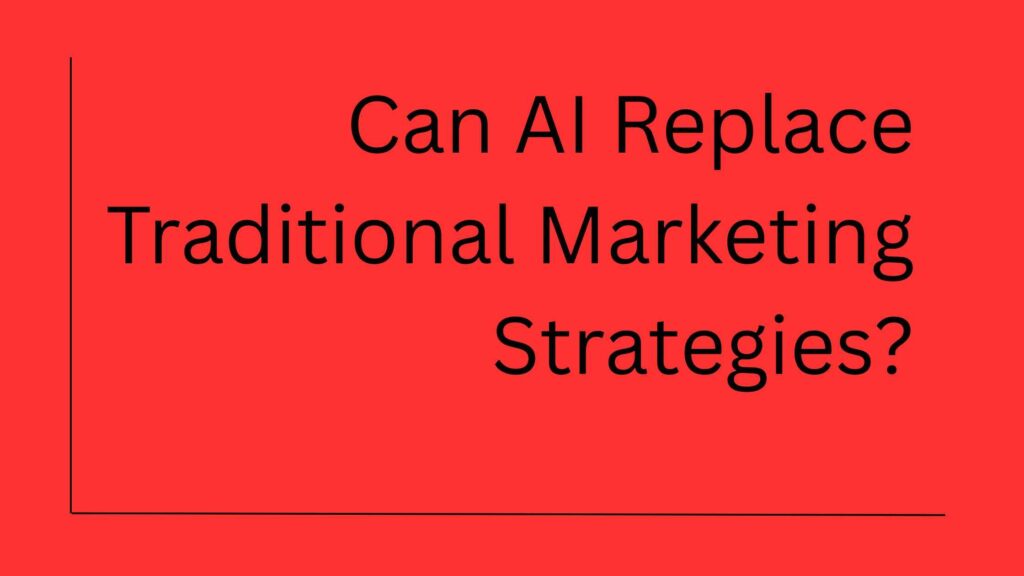
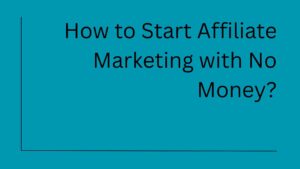
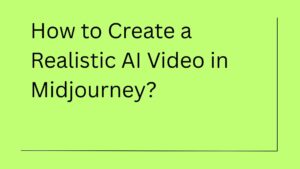
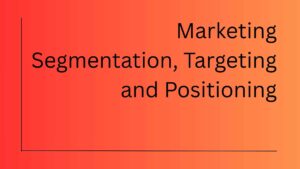
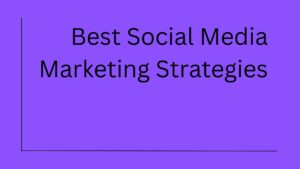
2 thoughts on “Can AI Fully Replace Traditional Marketing Strategies? (Explained)”
Your passion for your subject matter on marketing shines through in every post. It’s clear that you genuinely care about sharing knowledge and making a positive impact on your readers. Kudos to you!
I recommend this blogger to everyone who looks up quality topics. I am sure this was written by an expert, and to say nobody else has talked much about the impact of AI in marketing, but you did it. That’s amazing, thanks.